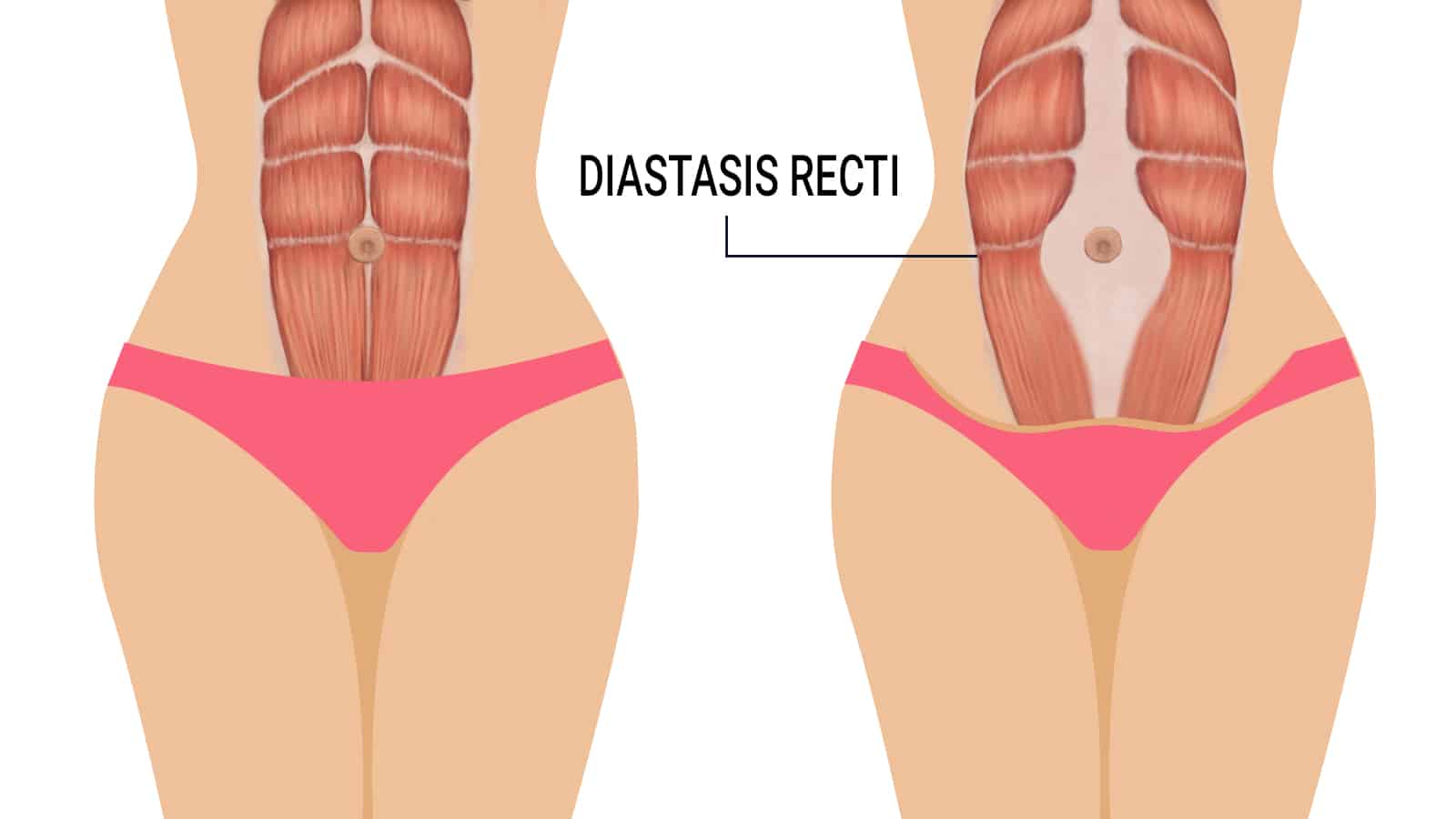Pregnancy is truly taxing on the human body. It stretches the abdomen, sometimes causing both sides to wind up separating. This usually causes bulge to remain around the lower stomach. The pelvic floor is also strained and tired from the delivery process.
It makes sense, then, that new mothers are interested in helping their bodies heal from the tiring ordeal. They want to close up the gaps caused by all that stretching. Many also have goals to lose the extra weight they’ve gained or to help their bellies firm back up. It’s not an easy process, but with positive thinking, it can be done.
Postnatal exercises can be tricky. Doing standard core-strengthening exercises can be too taxing on your body, and they only workout your external muscles, not the internal ones you stretched! You also can’t do too much without causing harm to your body, which is still trying to recover.
So, which exercises are effective and safe? Luckily, there are plenty of moves and workout routines that have been deemed okay for postnatal use.
Here Are 5 Exercises For New Moms That Heal Your Belly

1. Early Tummy Toning
The first types of exercises you do after giving birth should be extremely simple and very gentle. As we previously mentioned, pregnancy tends to stretch out abdominal muscles, and in many cases, this causes them to separate.
It will take a good long while before those muscles heal well enough for you to attempt serious core workouts. In the meantime, simple and gentle exercises focused on your tummy are great options. These will help to provide positive toning benefits, working out internal muscles, even down the deepest layer. (1) A mini tummy tuck nassau county, NY can speed up the results to a flat stomach.
Before the abdominal muscles have closed their gap, you have to be very careful with your stomach exercises. Here’s a great one to use when you’re just starting out.
- Step 1: Start in your position of choice. You can lie down, rest forward on all fours, sit down, or even stand up. It is advised that a doctor or a relevant medical professional is present to assist you.
- Step 2: Make sure your lower back area is flat, not arched in any way.
- Step 3: Exhale deeply in such a way that your belly button moves backwards towards the area of your spine. Remember, your lower back should stay flat and unmoving.
- Step 4: Pause, holding the position while continuing to breathe in a light and easy manner. Do this for 10 counts.
- Step 5: Relax your body back to its initial position.
- Step 6: Repeat this process. You can do this up to 10 times. This will be considered one set.
- Step 7: You can continue to do 10 sets at a time. You may also do this multiple times daily.
2. The Heel Slide
The heel slide is a great, gentle workout among the very best postnatal exercise moves you can do. It has positive effects on a particular deep core muscle known as the psoas. This muscle is responsible for leg, spine, and pelvis connection. Here’s how to do the heel slide. (2)
- Step 1: Start by lying on the floor with your back and feet pressed into the ground. Your knees should be bent.
- Step 2: Inhale deeply. Let your stomach expand.
- Step 3: Now, slowly slide out one of your feet, continuing until the leg is straight.
- Step 4: Exhale deeply. Flex your outstretched foot as you slowly bring your heel backwards to its initial position. As you do so, maintain a sliding motion, and keep your body still.
- Step 5: Repeat this process with your other foot. You can do this up to 20 times (10 on each foot), but feel free to start lower.
Note that this exercise is not to be done until your abdominal muscles close!
3. Advanced Tummy Toning
Once your abdominal muscles have healed sufficiently and the gap has been given time to close, you can escalate the early tummy toning exercise into a slightly more complex one. Here’s how to do it. (3)
- Step 1: Start by lying on the floor with your back and feet pressed into the ground. Your knees, naturally, should be bent, with your hands resting on your thighs.
- Step 2: Exhale deeply, allowing your ab muscles to contract. As you do so, lift your shoulders and head upwards off the ground, moving your hands in a sliding motion to your knees. The goal is for only your head and shoulder blades to be lifted.
- Step 3: Pause, holding the position for a few moments.
- Step 4: Relax. Slowly bring your head and shoulders back down to their initial position.
- Step 5: Repeat this process. You can do this up to 10 times. This will be considered one set.
- Step 6: You can continue to do 3 sets at a time.
4. Early Pelvic Muscle Routine
The pelvic muscles often become stretched during childbirth due to the fact that you have to pass something very large through them. You can find these muscles stretched across multiple places, as these muscles provide support to the bladder, bowel, and womb, among other body parts.
The pelvic floor undergoes quite a bit of change during pregnancy and after childbirth before it returns to its original state several months postpartum. However, these muscles can still experience some weakening during this process. Studies indicate that improper pelvic muscle care after childbirth can lead to issues such as incontinence, prolapse, and even pelvic-perineal dysfunctions. (4)
Pelvic exercises can also help your belly to heal, as most pelvic exercises aid in the strengthening of deep core muscles.
Here’s how to do a very simple pelvic workout routine that can be done before the abdominal muscles have closed their gap.
- Step 1: First, identify your pelvic muscles. These are the ones you clench when you stop yourself from urinating.
- Step 2: Start in your position of choice. You can lie down, sit down, or even stand up. It is advised that a doctor or a relevant medical professional is present to assist you.
- Step 3: Release tension in your body and try to keep your abdominal muscles relaxed. Breathe normally, at a calm rate.
- Step 4: Squeeze your abdominal and pelvic muscles, gradually exerting more and more tension until you have managed to contract them as far as possible.
- Step 5: Release the hold and relax. Do so in a slow and very gentle manner.
- Step 6: Now, squeeze your muscles again, holding them for between 5 and 10 seconds. Gently release in a slow manner. Repeat this particular step 10 times.
- Step 7: Now, squeeze your muscles again, this time in short, quick, hard motions, instead of gentle and slow ones. Repeat this particular step 10 times.
- Step 8: Now, squeeze your muscles again, and as you do so, let out a light cough (or just clear your throat. Repeat this particular step 3 times.
- Step 9: This entire process, from step 1 to step 8, is considered one single set of the pelvic workout routine. You can continue to do between 5 and 6 sets on a daily basis.
5. Advanced Pelvic Muscle Exercises For New Moms
This pelvic move can be done within a week of a typical birth, though a few months’ wait is necessary for those who have had C-sections. Speak to your doctor for clarification. It will help strengthen ab and pelvic muscles all at once! Here’s how to do it.
- Step 1: Start by lying on the floor with your back and feet pressed into the ground and your arms by your sides. Your knees should be bent with a pillow tucked between them, and your hips should rest on a pillow.
- Step 2: Breath in deeply, then exhale deeply. As you do so, bring in your abdominal muscles and tuck your pelvis. Squeeze your buttocks, too. While this is happening, perform a Kegel hold (where you clench your pelvic muscles).
- Step 3: Pause, holding the position for five seconds.
- Step 4: Relax. Slowly return to your initial position.
- Step 5: Repeat this process. You can do this up to 10 times.
Now, here’s one last pelvic exercise.
It should only be done after your ab muscles have closed. It can help your lower back, buttocks, and core become stronger. Here’s how to do it.
- Step 1: Start by lying on the floor with your back and feet pressed into the ground at a hip’s width away from each other. Your knees should be bent.
- Step 2: Inhale, then exhale deeply. As you do so, bring your ab muscles inwards and upwards so it moves in to your spine.
- Step 3: Lift your hips up into the air as you push your pelvis upwards until your knees and hips are in a straight line.
- Step 4: Relax. Slowly bring yourself back down to the initial position.
- Step 5: Repeat this process. You can do this between 5 and 10 times. Build up slowly from 5!
Final Thoughts On Some Exercises For New Moms That Heal Your Belly
The world puts a lot of pressure on new moms to “bounce back” and look like how they were before getting pregnant. It’s a rather unrealistic expectation, so keep that in mind when you’re doing these exercises. They will give you results, but they take time, and you shouldn’t hold yourself to impossible standards!
We know just how eager you may be to get back in shape after bringing your beautiful baby into the world, but take it slow! You are under no obligation to be super fit right after giving birth. Plus, you need time to rest and heal, and pushing yourself too hard can lead to permanent injury.
All exercises that you use should be slow and gentle. It’s a good idea to speak to a doctor before going through with these exercises. Talk about the best possible steps you can take to heal your belly, and follow their instructions well! Postnatal exercise can boost mood and positive thinking too, to help you with the hormonal changes. (5)
At the end of the day, your best bet is to go at your own pace. Focus on performing the right exercises that workout both internal and external muscles. If you do them the right way, and you’ll be able to hit whatever goals you have with regular practice!


















